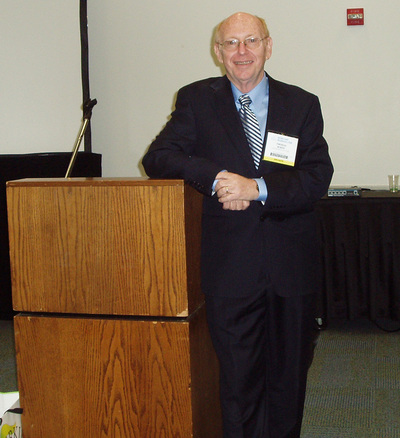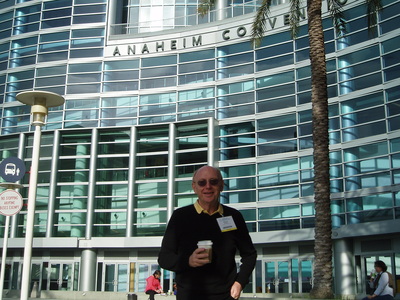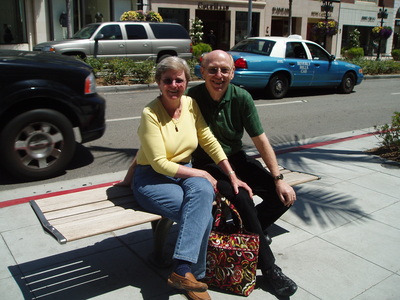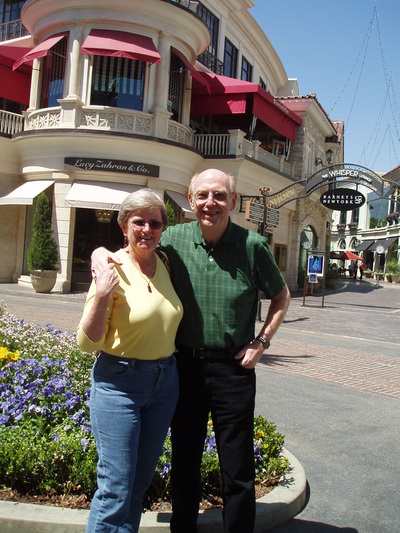0 Comments
The USCCB refers to this coming Sunday as “Palm Sunday of the Lord’s Passion,” though in popular parlance the simpler “Palm Sunday” will probably remain with us for generations in everyday “parish talk.” Since the reforms of 1970 there has been considerable catechetical and liturgical effort to include the title “Passion” in the name of the feast. I have seen some curious formulations on Church calendars such as “Passion (Palm) Sunday.” This is one of those rare feasts that actually mark two different historical events; the remarkable entrance of Jesus into Jerusalem, and his Passion account. The Church has seen the solemn entry of Jerusalem as the first stage of the events that would culminate with the crucifixion on Good Friday. There are actually two Gospel proclamations in the Palm Sunday liturgy: the first during the rite of the blessing of Palms, the second during the full Liturgy of the Word.
In keeping with the B Cycle, both Gospel proclamations come from St. Mark. Interestingly, the USCCB site allows for an alternate text from St. John to describe the solemn entrance into Jerusalem. For our purposes here I will stay with Mark’s account throughout. The Jerome Biblical Commentary (1989, 41:70) observes that the entrance of Jesus into Jerusalem seems inspired by prophetic actions. Particularly of note is Zechariah 14, a truly remarkable episode, which describes the Mount of Olives (the starting point of Jesus’ procession) as the place where the Lord as divine warrior would fight the “great eschatological battle,” the ultimate conflict between good and evil for all time. This apocalyptic or “end of world” flavor is consistent with this Gospel throughout. The fact that all four Gospels report of an unusual popular entry into Jerusalem argues for historical confidence and a conscious gesture by Jesus to evoke consistency with the Old Testament prophetic message. Generations of preachers throughout my lifetime have made the point—correctly—that there is a great contrast between the recorded crowds of Palm Sunday and (presumably) the same hostile crowd of Good Friday. Mark has noted earlier that Jesus was skeptical of the crowds who followed him and witnessed his works and miracles, and apparently with good reason. A recurring theme of this Gospel is the shallowness and weakness of faith of his followers, a theme that continues to the very end of this Gospel on Easter Sunday (16:8) As best we know, Mark’s is the first written account of the Passion; it formed the template for the three others to follow. This passion narrative (Mark 14:1-15:46) is the shortest and very much to the point: Jesus died alone, agonizingly, the model of the full cost of discipleship. A great deal of what we think of as part of the Passion narrative is missing from Mark, or put another way, later evangelists elaborated considerably on Mark’s material for theological reasons. Mark’s Last Supper report emphasizes the betrayal of Judas and in the blessing of the bread and wine. Mark does quote Jesus as saying he would not drink of the cup again until he drank it anew in the coming Kingdom of God. There is no significant supper dialogue as in John’s Gospel. The prediction of Peter’s betrayal occurs on the Mount of Olives, though in 14:31 all of the disciples repeat Peter’s boast of loyalty to the death—and thus carry the shame of betrayal later. As several commentaries note, the historical basis of Judas’s betrayal in the garden is strong—no Christian would have invented such a betrayal; Mark notes that Judas is “One of the Twelve,” a brief insertion that increases the shame factor exponentially. In 14:51 Mark alone adds the strange incident of a young man fleeing the scene naked. It has been common to identify this man as Mark himself, but recent scholarship tends to see this odd insertion as a symbol of utter and complete desertion. The Sanhedrin trial is brief; Mark observes that the witnesses were little more than fools. It is Jesus’ own testimony, that he is the Messiah, the Son of the Blessed One, which resulted in his condemnation. St. Luke elongates the trial by involving King Herod, and John has multiple involvements with Pilate, but Mark’s account is simple and straightforward. Mark does record Pilate’s perplexity, but Pilate is much less troubled here than he appears in St. John’s account. Jesus was subjected to a standard ritual of torture and mockery at the hands of court soldiers, who evidently were used to executions of political pretenders. The JBC is moved to comment upon the brevity of the actual crucifixion account. Jesus was offered a numbing cheap wine which he refused (“I will not drink wine again until….”). The act of crucifixion is described in one line, 15:24, which tends to obscure the detailed physical atrocity of this process for modern readers. Contemporaries of Mark, who no doubt observed birds of prey eating the corpses of crucified men and women, needed no elaboration. Both criminals crucified with him join the universal chorus of derision and hatred. Jesus speaks only once on the cross, the cry of utter abandonment that, almost scandalously, seems targeted toward his Father as well as anyone who had ever made a claim of faith in his message. It is important to remember, of course, that Catholic doctrine has long held for the full humanity of Christ; to have experienced this utter abandonment probably evoked a true human response from Jesus in his death throes. One final point: even after Jesus’ death, his remaining followers kept their distance. Line 15:20 reports that even the “faithful women” looked on from a distance. In the increasing darkness of dusk, Joseph of Arimathea finally comes to Pilate for the humanitarian gesture, so late in the day that preparation of the body for interment is not possible. Clearly the introduction of Mark’s Passion into the liturgical cycle brings home to us the full horror of a word we use somewhat routinely, crucifixion. As you enjoy your Irish soda bread and coffee this AM (and if you are drinking Irish coffee for breakfast, don’t make important decisions until noon) it is worthy that we salute St. Patrick. He is certainly one of history’s great missionaries and catechists; he is less remembered for his contributions to the Church’s legal tradition or what we call today Canon Law, in part because he didn’t seem to worry about it very much.
For the last dozen years or so I have been a presenter at the annual NCEA Conventions. Up until this year I submitted proposals under my state licensure and gave presentations on mental health and staff development, and the vetting was very smooth. Last summer I decided to change direction, and I submitted a proposal under the religious education department of the same organization. I was pleased to see that my topic, Resurrection Catechesis, was accepted. But I found it very amusing that the vetting process was entirely different. I had crossed into a new kingdom, the land of dogma, where the guards, shall we say, are a bit skittish. Official paperwork for testimonials of my orthodoxy, sacramental participation, and good name soon followed. This was not Patrick’s world. Kevin Madigan’s Medieval Christianity (2015) provides us with the most recent scholarship of early Irish Christianity. The first thing that must be admitted is the near impossibility of accessing any solid historical sources. This shouldn’t be too surprising given that we really don’t know who had President Kennedy killed, or what happened to Jimmy Hoffa, or how UCLA made the March Madness 64 on Sunday, for that matter. Madigan, putting together the best sources, confirms that Patrick was probably of aristocratic stock; his father was a Roman official in Britain. Seized by pirates, Patrick served six years as a shepherd in County Mayo until he escaped back to Britain. He appears to have had a conversion experience of some kind, for on his return home he studied a primitive catechism and, apparently, St. Jerome’s new Latin Vulgate translation of the Bible. Madigan believes he trained under British priests and was himself ordained. He is reported to have had visions calling him to return to Ireland, despite the understandable protestations of his parents. Patrick set off for a land the Romans had never tried to colonize. Most readers are probably familiar with early Ireland’s demographics, a tribal land with no cities. Thus, unlike Europe, Ireland’s bishops would be itinerant, without city-based dioceses, and soon Patrick himself was an itinerant bishop. One of history’s more intriguing questions is exactly who laid hands upon him for Episcopal ordination. According to Madigan, no one did, neither British nor Irish. In what may be an actual letter of Patrick to one Coroticus, Patrick states that he simply declared himself to be bishop, having received his Episcopal ordination and jurisdiction directly from God. Patrick’s earliest biographers attempted to gloss over this little detail by asserting that Patrick was sent to Ireland (with authority) by Pope Celestine. The problem with this explanation is that Celestine had already appointed Palladius, who had Christianized much of the south of Ireland. Patrick, therefore, worked the northeast, west, and central portions of Ireland. He addressed himself to the leaders of clans; if the chieftains accepted Christianity, the entire tribe would follow. He often paid money or presented gifts to chieftains to gain a hearing. While generally successful, the mass conversions triggered anger among other tribes, and group massacres and martyrdom were not uncommon. Patrick anguished over the particularly harsh plight of the female victims. He himself was imprisoned and expected to be killed. Madigan indicates that Patrick did not enjoy support of other churchmen, such as there were at the time. His sinful youth was held against him as making him unfit for Orders; I suspect that his independence, style, and determination (and success?) may have alienated other clerics as well. Madigan assesses Patrick’s missionary career as, in the long run, “effective.” By the time of his death Ireland was at the least nominally Christian, and the seeds were sown for the next great wave of Christian formation, the establishment of monasteries, which would give Ireland its reputation as the land of “Saints and Scholars.” You have to wonder if the monks of a later day, who embedded the Irish Church with order of mind and soul, appreciated the irony of completing the work of a man of impulsivity, imagination, and unfettered mysticism. There is something consoling in the fact that among our great saints are a few who routinely “missed the spittoon” so to speak and worried not a wit. Today I saw the power of a Catholic funeral Mass.
In 2001 my step-son was killed by a drunk driver. And while the funeral Mass in my present home parish was heartwarming, and I will be forever grateful to Bishop Norbert Dorsey and my parish priests at the time for the solemnity of the Mass of the Resurrection, there are entire portions of that day I do not remember. Some of you (hopefully few) may have had similar traumas and understand how the mind protects shocked and tired survivors. But this is 2015, and today climaxed a period of shock, hope, and ultimate grief for an entire parish and school. About a month ago one of our diocese’s best loved and energetic Catholic school principals was stricken suddenly with a life-threatening illness. Multiple surgeries were involved and needless to say, prayers for the recovery of this principal stormed heaven, from the youngest child in the school to the oldest benefactor. I knew this principal as she had hosted some of my catechetical workshops for the diocese and made us all feel at home while brewing a mean cup of coffee for one and all. I was very familiar with her parish, as I had served there as pastor for four years, long before her tenure. My wife knew her very well, as she likewise had been principal of the same school twenty years earlier, and both of them were active principals in this diocese for some years. And to add another twist, when the principal became ill, one of our longest and dearest friends was tapped by the diocese to step into the principal’s role. At the end of last week, despite the prayers of all and the efforts of her doctors, this principal, at the height of her professional/ministerial life, passed away. Although my wife and I had planned to attend her funeral, I awoke this AM with a nagging resistance about going. I knew it would be a highly emotional event for all involved; I guess at some level I resisted the inevitable pain to myself. It was my wife and my best friend’s needs that probably prompted me to put on my funeral tie and head out into the fog for the Mass. The site of the church is the exact site where my stepson was killed fourteen years ago this month. Maybe that was on my mind, too. When we arrived, about 45 minutes early, the parking lot was near full to capacity. Shortly after we were seated the mood was set by the two choirs; the parish’s adult choir sang a medley of appropriate music and did so magnificently. But immediately after, the school children’s choir raised its voices in song; I was told later that the principal was particularly proud of her choir. Aside from the emotional impact of their earnest voices, my eyes welled up at the thought that these young ones will have the lifelong memory of having served a principal they loved in such a public and endearing way. The processional—does one ever lose that sense of solemnity when a casket of a human being is brought down the center aisle, led by the celebrant and followed by the family, in this case a surviving husband and teenaged son? I could not take my eyes off of this rite. This morning Orlando’s Bishop John Noonan served as presiding celebrant. The occasion and the person called for that, but our bishop has the inner sense as main celebrant to enhance the participation of the local clergy. The homily brought together the theology of death with the emotional experience of the day. The homilist was the former pastor, who had hired this principal, and he recalled with humor and grace the workings of the selection committee and the kind of leader the school was looking for at the time of her hire. After communion the principal’s mother addressed us. As a celebrant myself for many years, I have seen this kind of familial witness go terribly wrong for many different reasons. I needn’t have worried. This woman demonstrated a strength and serenity that carried her through what must have been an arduous ordeal. Without hyperbole, excess, or hagiography, this mother stated to all of us that she was proud to have borne her daughter and proud of the choices she had made with her life. It was a parental “well done, good and faithful child.” The impact was beyond tears: this was a farewell and a testament to a life well-lived. In paradisum. “May the angels lead you into paradise.” It would be hard to find an official text in the Roman Missal that evokes more feeling, coming as it does when the casket is prepared for departure down the center aisle and thus to burial, to await the new and glorious Jerusalem. When this is sung well, as it was today, there is genuine feeling wedded to bedrock belief. I wrote a ways back about Aristotle’s term catharsis, “the washing of the emotions.” When our rituals and sacraments are celebrated well, as they were today, the experience of God is truly of the body and the soul. In sharing our humanity, Jesus felt grief and openly expressed it, weeping as he pondered the future of Jerusalem and the death of his close friend Lazarus. Tears do not bring resolution—this family and this parish community has much to endure in days ahead—but solidarity with the One whose own death has given us the strength to go on. As the congregation dispersed, I stood alone in the hot Florida sun. I felt that somehow God had washed my emotions, griefs and pains of which I am well aware, and probably those from my past that remain in the marrow of my bones. God’s catharsis, I guess. After the first two Sundays of Lent, where the Church celebrates two events of notable importance, the desert experience of Jesus and the Transfiguration on the mount, the Cycle of Readings goes into three distinct theological directions. The A Cycle, with all three Gospel texts from St. John, highlights the embrace of faith in the person of Jesus as the life-giving One who is to come. These Johanine readings are elongated progressions of faith: the Samaritan woman at the well, the man born blind, and the raising of Lazarus. In the A Cycle John replaces the narrative of St. Matthew during this portion of Lent, and these readings in A have become so identified with the catechumenate that many parishes use the A cycle readings exclusively every year during weeks three, four, and five. This is permissible under Church law.
In the B cycle, our current year, John replaces Mark in the later Sundays of Lent. This is a common feature in Year B, as Mark’s is the shortest Gospel, and John is not assigned to a particular year. John will make another appearance this summer during a six week span, when John 6 is read at Mass, the so-called “breads narrative” of the Eucharist. John’s Gospel is read exclusively at a number of major Church feasts, including Holy Thursday and Good Friday as an annual event. While Mark’s Gospel disappears for a time until his Passion is read on Palm Sunday, his themes do not. We talked on Sunday of Mark’s description of the Transfiguration and the difficulties of the prophets/disciples in winning the glory of Jesus, Moses and Elijah. On the Third Sunday of Lent John’s Gospel (John 2:13-25) depicts the multiple prophetic struggles, including Jesus’ violent expulsion of vendors from the temple precinct, a hostile exchange with Jews who question his authority, and John’s observation that regarding the crowds who followed him, “For his part, Jesus would not trust himself to them because he knew them all.” Mark, you may recall, noted that Jewish authorities began plotting Jesus’ death as early as 3:6. John has accounted this deadly hostility even sooner, in Chapter 2. On the Fourth Sunday of Lent John recounts the nighttime discussion of Jesus with Nicodemus, a Jewish leader with a flicker of interest in his message. (John’s practice of positioning the sun as a barometer of faith is on display here: Nicodemus comes “at night” while the Samaritan woman meets Jesus at high noon.) In John 3:14-21 Jesus explains to Nicodemus that “the Son of Man must be lifted up” (that is, crucified) that all may have life in him. But John goes on in this passage with a critical elaboration. In Mark, Jesus and John the Baptist had always spoken of Judgment in the immediate future. But John, throughout his Gospel, stresses that the “future is now.” As John quotes Jesus, “Whoever believes in him avoids condemnation.” This is present tense, not future. Determination of eternal destiny does not await a future coming, but is based upon an existential decision in this moment as to place faith in the words of Jesus and the Father who sent him. John continues the theme of urgency in the Gospel of the Fifth Sunday of Lent (John 12:20-33). Here we have the appearance of inquisitive Greeks, apparently seeking wisdom from Jesus. Jesus does not acknowledge their ethnicity but apparently includes them in his universal teaching to follow. Again, with a nod to Mark, John reports Jesus’ teaching that the grain of wheat (Jesus? the true disciple? both?) must die if it is to bring forth much fruit. Jesus continues to speak, present tense, about the dangers of loving one’s life too much to the point of losing it. “If anyone would serve me, let him follow me.” Like Mark, John notes the anguish of discipleship. “My soul is troubled now, yet what should I say—Father, save me from this hour?” After a divine voice affirms him from the sky, Jesus returns to the urgency of the moment: “Now has judgment come upon this world, now will this world’s prince be driven out…” Despite the years between their composition—four decades by some account—Mark and John show a remarkable kinship of thought—except that John has moved the hour hand much closer to midnight for the moment of decision. |
THINGS BIBLICAL. Archives
March 2024
|





 RSS Feed
RSS Feed